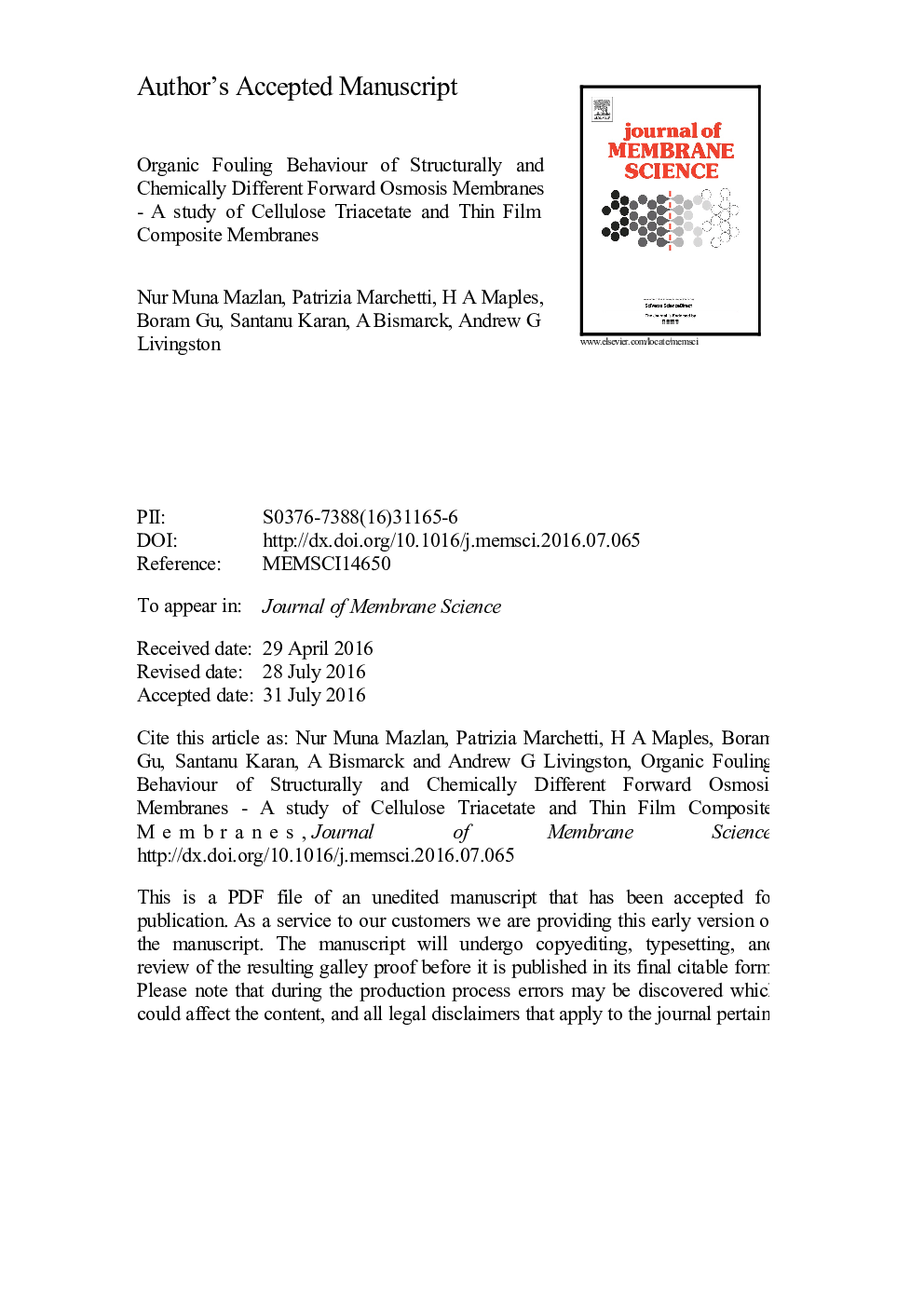| کد مقاله | کد نشریه | سال انتشار | مقاله انگلیسی | نسخه تمام متن |
|---|---|---|---|---|
| 632164 | 1455979 | 2016 | 44 صفحه PDF | دانلود رایگان |
عنوان انگلیسی مقاله ISI
Organic fouling behaviour of structurally and chemically different forward osmosis membranes - A study of cellulose triacetate and thin film composite membranes
ترجمه فارسی عنوان
رفتار غلظت آلی از غشاهای اسمز معکوس از لحاظ ساختاری و شیمیایی متفاوت - مطالعهی غشای ترکیبی سلولز ترایکتات و نازک
دانلود مقاله + سفارش ترجمه
دانلود مقاله ISI انگلیسی
رایگان برای ایرانیان
کلمات کلیدی
اسمز معکوس فساد آلی، برگشت پذیر شدن غلط، ترایکتات سلولز، کامپوزیت فیلم نازک،
موضوعات مرتبط
مهندسی و علوم پایه
مهندسی شیمی
تصفیه و جداسازی
چکیده انگلیسی
The HTI cellulose triacetate (CTA) and novel thin film composite (TFC) membranes are used to study the multifaceted interactions involved in the fouling and cleaning of forward osmosis (FO) membranes, using calcium alginate as a model foulant. Results show that fouling on the TFC membrane was more significant compared to CTA, arising from a variety of factors associated with surface chemistry, membrane morphology and structural properties. Interestingly, it was observed that in FO mode, membrane surface properties dominated over fouling layer properties in determining fouling behaviour, with some surface properties (e.g. surface roughness) having a greater effect on fouling than others (e.g. surface hydrophilicity). In pressure retarded osmosis (PRO) mode, structural properties of the support played a more dominant role whereby fouling mechanism was specific to the foulant size and aggregation as well as the support pore size relative to the foulant. Whilst pore clogging was observed in the TFC membrane due to its highly asymmetric and porous support structure, fouling occurred as a surface phenomenon on the CTA membrane support layer. Besides pore clogging, the severe fouling observed on the TFC membrane in PRO mode was due to a high specific mass of foulant adsorbed in its porous support. It was observed that a trade-off between enhanced membrane performance and fouling mitigation is apparent in these membranes, with both membranes providing improvement in one aspect at the expense of the other. Hence, significant developments in their surface and structural properties are needed to achieve high anti-fouling properties without compromising flux performance. Measured fouling densities on the studied surfaces suggest that there is not a strong correlation between foulant-membrane interaction and fouling density. Cleaning results suggest that physical cleaning was more efficient on the CTA membrane compared to the TFC membrane. Further, they implied that despite different mechanisms of fouling and quantities of foulant adsorbed in FO membranes, FO is a resilient process with high cleaning efficiencies and fouling reversibility.
ناشر
Database: Elsevier - ScienceDirect (ساینس دایرکت)
Journal: Journal of Membrane Science - Volume 520, 15 December 2016, Pages 247-261
Journal: Journal of Membrane Science - Volume 520, 15 December 2016, Pages 247-261
نویسندگان
Nur Muna Mazlan, Patrizia Marchetti, H.A. Maples, Boram Gu, Santanu Karan, A. Bismarck, Andrew G. Livingston,
